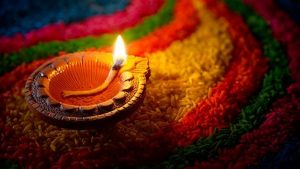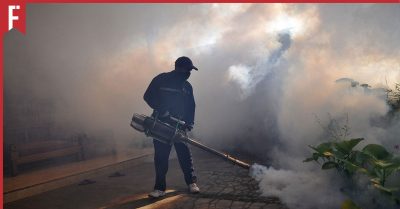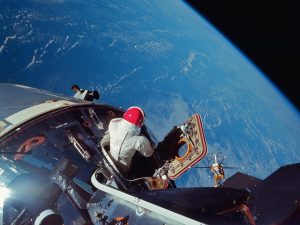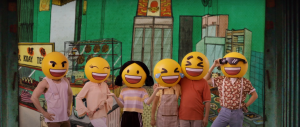
For the longest time, women had to fight their way into being recognised by the media and society. Everything women did was compared to men or often overlooked. But as times changed, women finally started getting the recognition they deserve in the media.
However, to this day, there are still many of these brave women who fight tooth and nail to take control of situations, the ones that can inspire many others that we never get to hear about.
Women like Marie Curie, who worked in male dominated fields like STEM, or the mothers who tirelessly work as housewives to set food on the table. Even artists like Lubaina Himid who worked day and night to make a living were constantly in the back of the line when it comes to recognition.
This is also the case for striving artist Poesy Liang. Poesy’s journey began when her parents noticed her knack for the arts and provided her with the proper training to enhance her talent.
Among the things she learnt were traditional Chinese landscape painting, Chinese water colour, Chinese calligraphy, carving of Chinese stone seal initials and over time, she developed a knack to compose nursery rhymes!
With the exposure, Poesy produced her first official painting when she was eight years old which was exhibited when she was 11!
Although having her first painting produced and exhibited at such a young age is no small matter, why have we not heard more about her?
It Wasn’t All Easy
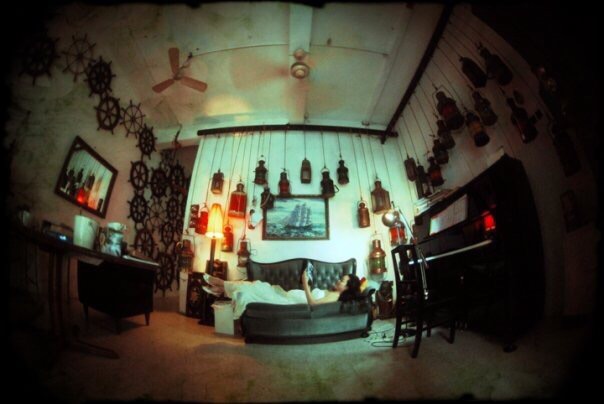
The way Poesy’s artistic journey took off, one might think she had it easy. While she was gifted with talent and her parents facilitated a nurturing environment to develop her multifaceted creativity, this did not stop life from taking its toll on her.
Poesy fought off paralysis caused by tumors in her spinal cord, not once but twice in her life. While doctors never thought she would ever walk again, Poesy had a strong will and was back on her feet both times.
Amongst her artistic body of work, Poesy has an immersive room installation called the “Pirate’s Daughter” taking a spin off her father’s collection of maritime artefacts that was amassed over 40 years, which casted rays of redemption onto a lifetime of unresolved regret.
The mystery of her private hell found young Poesy in situations familiar to many women; abusive and toxic relationships. This was just another dilemma that she had to figure out and overcome by reinventing herself; and discarding unnecessary relationships.
“I had a very tough time through my 20’s up till my early 30’s, but those experiences turned me into who I am today”, says Poesy recalling the struggles she went through in the early stages of her journey.
Poesy’s Art

It isn’t uncommon for talented children to disconnect from their creative center as they grow. But this was not the case for Poesy. The older she got, the more art became an integral part of her personality, something that became life changing rather than a shallow aesthetic that only served the visual sense.
Her art morphs between cute little paintings and impact messages that aims to cure the world’s ailments — she founded social movements and made a difference.
Her exhibited artworks frequently embedded with hidden messages, Poesy believes that this is how she is doing her part in changing the world. She has something to say.
“In the general big picture, I am a nobody. But all of us as human beings have a role to play in this world. You don’t need to be big in order to make a difference. You can make a difference in your small, tiny world,” says Poesy.
When it comes to Poesy’s own little world, she does not plan the big changes she wants to make. To her, it always happened with chance.
“I am always the underground counsellor to my social circles when they are at the crossroads of their lives and I often find myself unintentionally advising them,” she says.
However, to Poesy, these private interactions will lead to new revelations or her next chapters in life, down the spontaneous rabbit hole that creatively lands her in high places unimaginable even to herself. One of the most noteworthy being the “Bald Empathy Movement.”
The Bald Empathy Movement
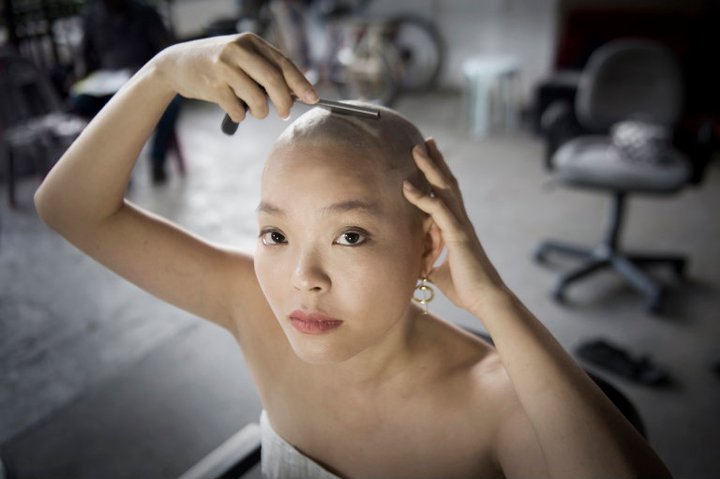
The “Bald Empathy Movement” started out when Poesy was adopted by a group of people she met in 2008. As they discussed their plans to the 64th Cannes Film Festival, they invited Poesy along to meet them in France in May 2011.
Poesy made her travel plans. She started combining a few items on her bucket list and soon a movement ensued. It was titled “Bald Empathy Movement”.
In order to rebrand goodness – Poesy aimed to make bald fashionable and to restore dignity of those suffering loss from debilitating disease that causes baldness. Poesy came up with a plan and pitched her idea first to 3 world renowned photographers in Los Angeles, Bali and London respectively.
“I told myself I will fully commit going bald in Cannes if these 3 photographers come on board. And they did without hesitation, I was shocked!”, she says.
Poesy worked with 9 photographers from 9 countries and each production team would manifest their own ideals based on Bald Empathy’s core objectives and lent their signature style to the photoshoots, creating a visual buildup to the eventual plan.
There were 7 photographers who captured Poesy before Cannes, and there were 2 more photographers who captured Poesy after she was bald and made a bold and glamorous statement.
The tour also touched countries that did not show up in the final movement, namely Brunei, Korea and Senegal. Poesy also met with a misadventure in Dakar when her French film collaborators showed signs of hostility and the Malaysian consulate came to her rescue and assisted her onto a plane back to Paris.
Poesy shaved off her hair on May 16th 2011 at 11am. But she was not alone in this, her parents, and a few other people took part in this movement with her. While the shaving commenced, the project launched to it’s very own soundtrack – written, composed and sung by none other than Poesy herself – that carries a strong message of compassion
While the end goal saw itself through 9 months of international travels to over 10 countries, Poesy ran out of money in Paris 6 weeks before the movement could complete. She found herself homeless for a night and was challenged to make personal sacrifices. Her survivor mode kicked in.
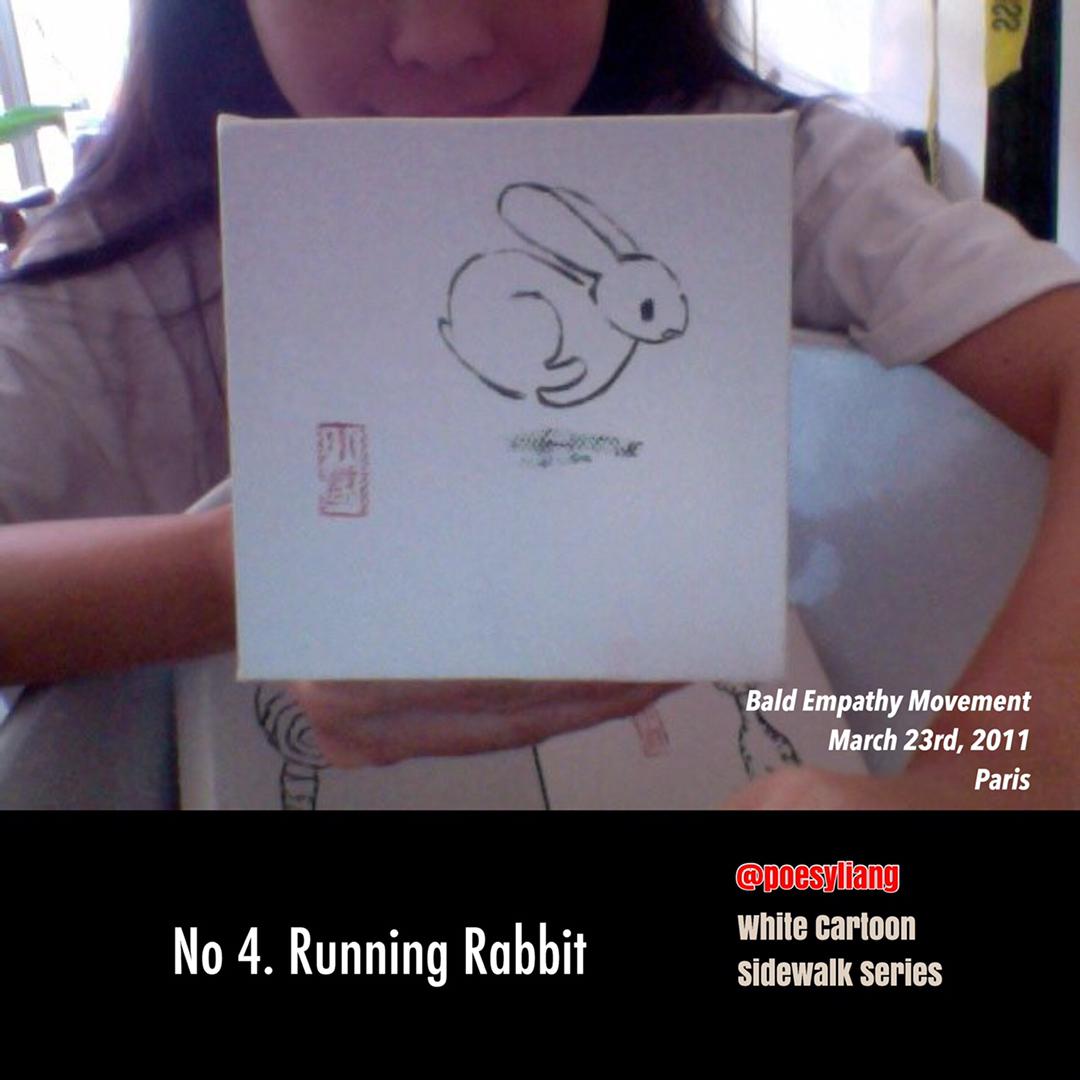
Poesy started painting by the sidewalks in order to fund the rest of that tour.
That survival stunt accidentally turned into something much bigger. Her sidewalk artist career produced the White Cartoon Sidewalk Series; a collection of 40 whimsical characters with their stories that has existed in Poesy’s figment of imagination for decades.
Out of the 40 characters, the Running Rabbit was the most popular. This character also exists in a digital format and will be among the first to appear in Poesy’s AR world. The second most popular character is a flying piglet seen to fart Chinese clouds, titled The International Bank.
Harry Putter The Rooftop Cat
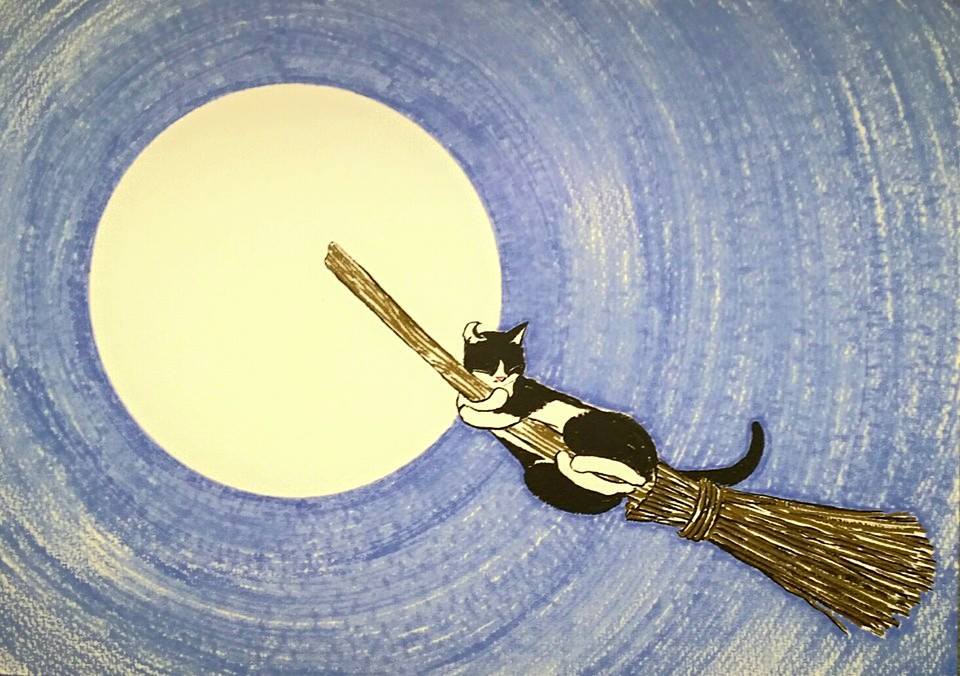
After Poesy returned from her “Bald Empathy Movement” world tour, she started to paint the Rooftop Cats in September 2011, as she recovered from her travel adventures and took a break.
She immersed in her original passion in architecture and drew rooftops that she had seen in her world travels, dotting each roof-scaped canvas with a couple of random cats.
In June of 2012, her art studio roof started to leak followed by the tropical monsoon season. By October, it was raining heavily inside the house and in November the entire roof collapsed. She had no resources to make major renovations as her rainy day funds went to a surgery in July. While her roof was slowly giving way, her mental health declined.
Just as she was prepared to give up on life, as if her paintings came to life, a black and white tuxedo kitten showed up outside her gate. He stayed by Poesy and distracted her with ridiculous antics everyday, and gradually lured her out of darkness.
While she had not realised it then, Harry Putter the cat, looked exactly like the cats in all her paintings.
“It was almost as if I had manifested my paintings into real life,” said Poesy.
The Poesy Empathy Project
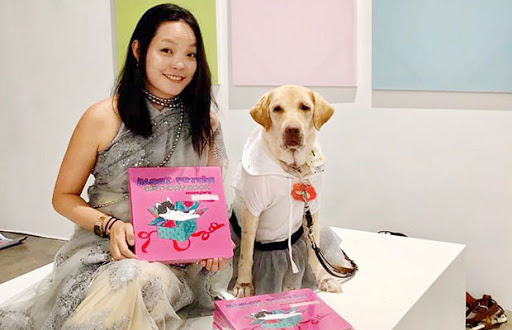
At the start of the “Bald Empathy Movement” tour, Poesy organised a jazz concert for some blind folks in San Francisco. The concert featured jazz maestro Kenny Washington, vocalist Suzanna Smith, Jeffrey Chin on the piano and Ron Belcher on bass, and they performed for 100 visually impaired clients of the Lighthouse for the Visually Impaired at their cafeteria in San Francisco.
This marked the beginning of Poesy’s catlike curiosity in visually-impaired people. She asked questions amongst her newly acquired blind friends and observed how they operate in day-to-day life; achieving tasks that able people don’t even need to think about.
After a few years of research and experimentation, the “Poesy Empathy: Hidden Messages” project was launched. The project aimed to challenge the blindness of able-bodied people to rely on the abilities of someone who looks disabled to the outside world.
She set off with three objectives:
-
To create opportunities for someone able to rely on someone disable.
-
To remove the sight, that is the root of all judgment, discrimination and racism.
-
To awaken the extraordinary abilities/senses, that tend to lie dormant, due to the distraction of sight.
“I wished to demonstrate that people should not always trust their eyes, and learn to see with the ears and nose, to sense the truth with the heart too. Many people in this modern society are blinded by their eyes, isn’t it ironic?” she quizzed.
Poesy was given the perfect platform to carry out this project at the leading SEA art fair Art Stage held at the Marina Bay Sands Convention Centre in Singapore. The Swiss founders of the art fair Lorenzo & Maria Elena Rudolf invited her to be one of six solo artists showcased during Singapore art week in 2018.
“I’m always more greedy for impact than I am for money, so we pushed for a lasting social message to over 1200 people who managed to see my sightless exhibition,” she says.
“I didn’t bother selling a single piece of artwork and personally funded the team salary in the name of humanity.”
Although the main part of her show was staged inside a dark room, she disguised her booth with cute art pieces and colourful QR codes on the floor of the waiting area as part of her queue management. There was a one-hour queue for four days of the show.
Poesy also dressed a real life dog in a ballerina dress and displayed her on a podium. What the public didn’t know was that it was a guide dog waiting for her owner who was on duty inside the show.
Poesy had six visually-impaired crew who took the audience through the dark room experience where they get to experience their other senses being awakened. She achieves this by manipulating tastes and smells that are familiar to most people from their childhood; with an eight minute audio clip of her unexpected life story.
The surprise element of this project was that the audience did not know that their guides were blind till the end of their dark room journey.
“People were bewildered when they came out of the booth, and many said ‘oh my god can I see how my guide looks like, his voice was so comforting and reassuring. I thought he could see in the dark so I can’t imagine him being blind’.”
“When we encounter someone who is obviously blind, no matter how we try to be inclusive, we fail to see that they might be someone who is very well read, or an expert of a certain field. A disable person is always seen as less than able.”
“However, I’ve come to realise that blind people have so many abilities that we do not give space for, and I am not talking about just the folks with visual impairment. I have hidden disabilities, I am a good example too,” she says.
This exhibition met with a fair share of criticism. While Poesy aspired for her audience not to judge with their sight, judge was exactly what some people did immediately. Those who did not investigate the show were quick to be offended, and reported the exhibition for exploitation of the dog.
In response to critical judgement, Poesy artfully brought attention to her cause and explained that her art exhibition was really about what cannot be seen with the eyes.
“I did a press release and explained to people that the real artwork was inside, where we don’t use our sight. I explained to everyone who created an uproar over a dog who was waiting for her blind mistress,” she says.
In the end, the project enjoyed critical acclaim and rave reviews.
“I created a room in Clubhouse to hold conversations with the leader of my visually impaired team, to bridge the gap for people to learn from somebody who manages to navigate the sighted world,” she says.
More Than Meets The Eye
While Poesy is widely recognised for her life story and her art, there is much more to what she does than meets the eye. Poesy is not just an artist but rather a woman of multi-faceted talents.
Other than her social movements and creating art, Poesy is also a multidisciplinary designer. Ranging from her offerings of fine gemstone jewellery with her jewellery house to designing the homes of international jet sets, Poesy amassed unique experiences in design over two decades.
When she is not making her international appearances and live painting events, you might also find her on glossy commercial endorsements.
Additionally, Poesy’s legacy is shaping up with a creative leadership scholarship program that awards outstanding girls to identify their life purpose before they start out in the workforce. The program also seeks to support children of single parents.
Everything connects back to the very first initiative, “Helping Angels”, a global volunteer movement of compassion based on random acts of kindness founded by Poesy as a Facebook group in 2007 and has won her a handful of media awards for humanitarian impact.
“I enjoy being a woman, and I tap into that power. From this space of self awareness improve myself whenever I have an extra minute, and I am committed to make the world a better place for the generations of women to come.”, says Poesy.
Women are still fighting to get the recognition and praise that they deserve, but amidst all of this, we must remember to embrace ourselves. I know they say sticks and stones may break your bones, but seeing stories of women truly making it despite the struggles makes me believe otherwise.
Why should we wait for someone to tell us we can do better or be better? We can own our dreams and make a run for it to the finishing line. Just like Shirly Chisholm once said: if they don’t give you a seat at the table, bring a folding chair.

